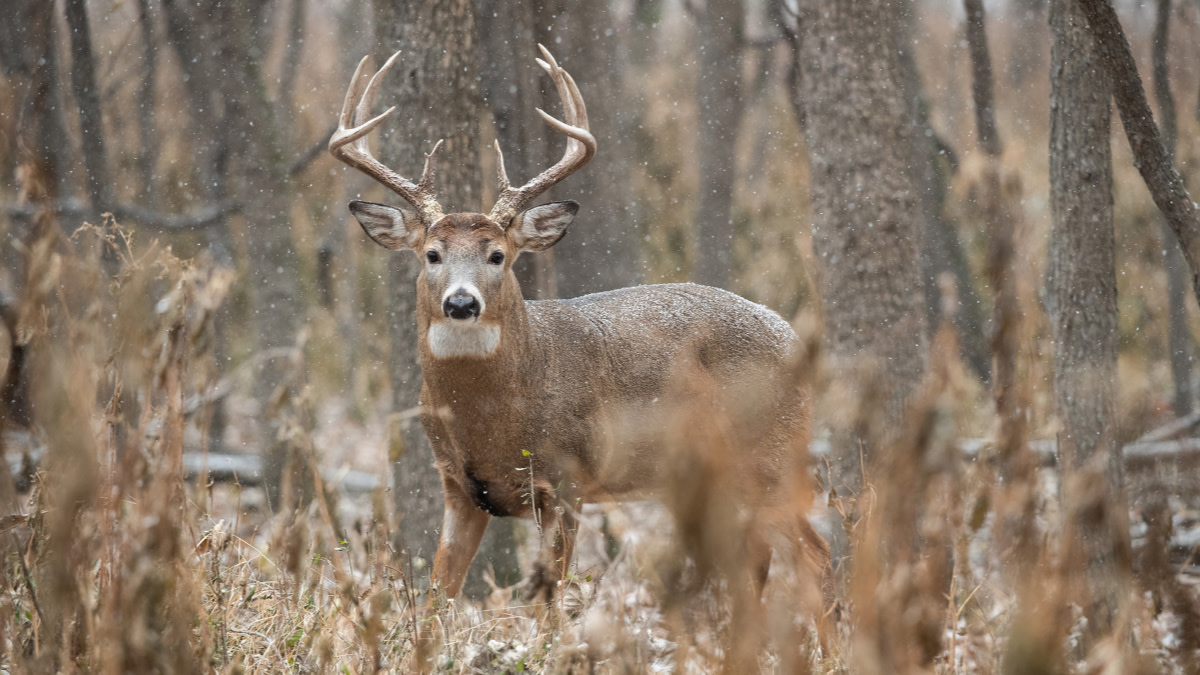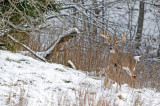
Santa Claus, Christmas carols, and candy canes be damned—now is not the time to get distracted from deer hunting if you still have a tag. The late season can be one of your best chances to kill a buck, but only if you play your cards right. That means paying attention to the weather.
Why?
By the time December and January arrives, most deer have been hunted for three months or more. All that hunting pressure leaves whitetails more cautious and less visible than they were earlier in the year. In an effort to avoid hunters and conserve precious energy, deer will travel as little as possible and mature bucks especially will often reserve that travel for the cover of darkness.
But this notion gets thrown out the window under special circumstances. In the late season, those special circumstances are almost always weather related.
The Impacts
The ideal situation for triggering increased late season deer movement is the presence of a significant winter weather system. The first scenario is a snowstorm. A windy, blustery blizzard will typically slow down deer as it passes through, but immediately upon things settling you can count on increased movement. All that pent-up energy and a desire to feed leads deer to get on their feet and move more than usual—with the first evening following the storm often being the very best.
Another strong trigger would be the mercury dropping into colder-than-usual temperatures. Similar to humans, deer burn significant calories to maintain body warmth, especially on frigid days. The first day or two after a significant late season cold front, with their caloric needs much higher than usual, deer will hit food sources earlier and for longer periods of time.
The final factor to consider is how late season weather might impact what food sources deer will focus on. On warmer days you might see deer feeding on still-green food sources, like oats, clover, or native browse. But when extreme winter weather increases a deer’s caloric needs, they’ll become hyper-focused on foods highest in energy. This means food sources such as corn and soybeans will become the top options, especially if the crops are still standing. Another late season food source of choice are brassicas—plants like turnips, kale, grape, and radishes—which become particularly attractive in ice-cold temperatures.
Taking Advantage
All of this can and should be incorporated into a careful strategy for hunting late season deer, especially if you’re targeting a mature buck.
I approach late season deer hunting with the mindset of a sniper. Rather than busting down doors, I sit, wait, and watch for the right moment to strike. Busting down the doors in the late season looks like hunting the same spots over and over regardless of conditions, or hunting great locations at the wrong times. The result of this kind of hunting will be spooked deer and mature bucks that will not move during daylight.
The alternative, which I practice, is waiting and scouting from afar until I get the late season weather I need. I’ll run trail cameras, glass from the road, or sit low-impact observation stands in an attempt to gain intel on deer activity. Then, when the snowstorm or cold front hits, I head in for the kill armed with the knowledge of the right place to be and the right conditions for deer to be there.
Feature image via Matt Hansen.




